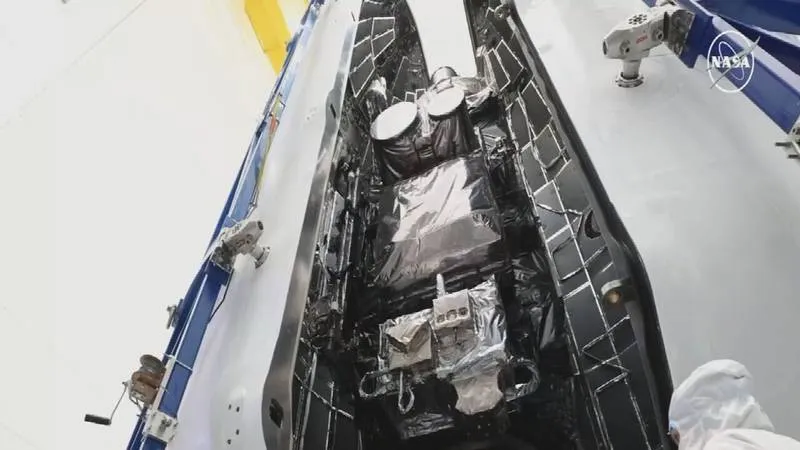On Tuesday, SpaceX launched its powerful Falcon Heavy rocket from the Kennedy Space Center in Florida, successfully deploying a weather satellite for the National Oceanic and Atmospheric Administration (NOAA). The satellite, known as GOES-U, will orbit 22,300 miles above Earth and monitor weather conditions across the United States, Central America, and South America. Once it reaches operational orbit, the satellite will be renamed GOES-19.
The Falcon Heavy rocket is composed of three Falcon 9 boosters, which combined create around 5.5 million pounds of thrust at launch. Following booster separation, two new side boosters supported the mission and returned to SpaceX Landing Zones 1 and 2 (LZ-1 and LZ-2) at Kennedy, while the core booster did not attempt to land. SpaceX shared footage of the boosters separating and returning to Kennedy, showcasing the rocket’s impressive capabilities.
The launch marks the Falcon Heavy’s 10th flight and its first since December 2023, when it launched the U.S. Space Force’s experimental X-37B Orbital Test Vehicle. The Falcon Heavy is currently SpaceX’s most powerful operational rocket, but the company is now testing the mighty Starship, whose thrust at launch is about triple that of the Falcon Heavy. The Starship is expected to take its fifth test flight next month after achieving a successful orbital test earlier this month.
The GOES-U satellite is part of NOAA’s Geostationary Operational Environmental Satellites (GOES) series and will assist weather forecasters and climate researchers with real-time high-resolution imagery, earlier detection of severe weather, and tropical cyclone forecasts. It also boasts a suite of space weather instruments designed to detect solar storms early and help predict their effects.

SpaceX Successfully Launches Powerful Falcon Heavy Rocket with NOAA Weather Satellite
SpaceX has been working to perfect its reusable rocket technology, and the ability to recover and reuse boosters is a key part of that effort. The company has successfully landed over 20 boosters since its first successful landing in 2015, and the Falcon Heavy’s ability to reuse its side boosters will help cut the cost of spaceflight.
As SpaceX continues to push the boundaries of space exploration and launch technology, the successful deployment of the GOES-U satellite is a significant milestone, demonstrating the company’s capabilities and commitment to its customers. The launch also marks another achievement in the long-term partnership between SpaceX and NOAA, which has been working together to improve weather forecasting and climate research.
In addition to its mission to launch the GOES-U satellite, SpaceX is also working on several other projects, including the development of the Starship, a reusable spacecraft designed for deep space missions. The Starship is expected to play a key role in SpaceX’s plans to establish a permanent human settlement on Mars. With its powerful launch capabilities and reusable technology, SpaceX is poised to continue making groundbreaking achievements in space exploration.








































